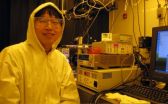(Press-News.org) Our genes control many aspects of who we are — from the colour of our hair to our vulnerability to certain diseases — but how are the genes, and consequently the proteins they make themselves controlled?
Researchers have discovered a new group of molecules which control some of the fundamental processes behind memory function and may hold the key to developing new therapies for treating neurodegenerative diseases.
The research, led by academics from the University of Bristol's Schools of Clinical Sciences, Biochemistry and Physiology and Pharmacology and published in the Journal of Biological Chemistry, has revealed a new group of molecules, called mirror-microRNAs.
MicroRNAs are non-coding genes that often reside within 'junk DNA' and regulate the levels and functions of multiple target proteins — responsible for controlling cellular processes in the brain. The study's findings have shown that two microRNA genes with different functions can be produced from the same piece (sequence) of DNA — one is produced from the top strand and another from the bottom complementary 'mirror' strand.
Specifically, the research has shown that a single piece of human DNA gives rise to two fully processed microRNA genes that are expressed in the brain and have different and previously unknown functions. One microRNA is expressed in the parts of nerve cells that are known to control memory function and the other microRNA controls the processes that move protein cargos around nerve cells.
James Uney, Professor of Molecular Neuroscience in the University's School of Clinical Sciences, said: "These findings are important as they show that very small changes in miRNA genes will have a dramatic effect on brain function and may influence our memory function or likelihood of developing neurodegenerative diseases. These findings also suggest that many more human mirror microRNAs will be found and that they could ultimately be used as treatments for human neurodegenerative diseases such as dementia."
MicroRNAs can be seen as a novel regulatory layer within the genome, relying on the interaction between different RNA molecules. Through binding to messenger RNA (mRNA), they adjust the levels of proteins. Due to their small size, they are able to regulate many different RNAs. MicroRNAs have already been found throughout the double helix, lying in between genes or in areas of the code for a single gene that would normally be discarded. Such areas that were once considered "junk DNA" are now revealing a more complex and important role. In addition microRNAs can be produced in conjunction with their genes, within which they lie, or be controlled and produced entirely independently.
Helen Scott and Joanna Howarth, the lead authors on the study, added: "We have now found that both sides of the double helix can each produce a microRNA. These two microRNAs are almost a perfect mirror of each other, but due to slight differences in their sequence, they regulate different sets of protein producing RNAs, which will in turn affect different biological functions. Such mirror-microRNAs are likely to represent a new group of microRNAs with complex roles in coordinating gene expression, doubling the capacity of regulation."
### The study, by Helen Scott, Joanna Howarth, Youn Bok Lee, Liang-Fong Wong, Ioannis Bantounas, Leonidas Phylactou, Paul Verkade and James. B. Uney, was supported by the Wellcome Trust, Medical Research Council (ERA-NET) and Biotechnology and Biological Sciences Research Council (BBSRC).
Further information
The double stranded DNA helix discovered by Watson and Crick holds all the information needed for life. Each strand of DNA is made up of a chain of units called bases. There are four different bases and it is the sequence of these bases that holds the information in sections called genes. Despite the sequence of the entire human genome now being known for ten years, scientists are still busy trying to make sense of all the information and understand the function of all the genes. For the information to be used, the sequence of DNA bases must be copied onto another molecule called RNA. Some RNAs are used to produce proteins, while other regulatory RNAs (called microRNAs) can control the production of multiple proteins. Together these RNAs regulate all biological functions.
Doubling the information from the double helix
Novel regulatory molecules called mirror-microRNAs control multiple aspects of brain function
2012-04-30
ELSE PRESS RELEASES FROM THIS DATE:
Deadly decision: Obese drivers are far less likely to buckle up
2012-04-30
BUFFALO, N.Y. -- Obese drivers are far less likely to wear seatbelts than are drivers of normal weight, a new University at Buffalo study has found, a behavior that puts them at greater risk of severe injury or death during motor vehicle crashes.
The UB study found that normal weight drivers are 67 percent more likely to wear a seatbelt than morbidly obese drivers. Drivers were considered overweight or obese if they had a BMI (body mass index) of 25 or more, according to the World Health Organization definition of obesity, with 25-30 defined as overweight, 30-35 slightly ...
Fruit flies provide new knowledge about uninhibited cell growth
2012-04-30
In a new study, scientists at the University of Copenhagen show that a specific type of carbohydrate plays an important role in the intercellular signalling that controls the growth and development of the nervous system. In particular, defects in that carbohydrate may result in the uninhibited cell growth that characterizes the genetic disease neurofibromatosis and certain types of cancer. The results have just been published in the well-reputed journal PNAS.
Scientists from The Faculty of Health and Medical Sciences at the University of Copenhagen have put a special ...
Researchers from the University of Zurich discover new particle at CERN
2012-04-30
This press release is available in German.
In particle physics, the baryon family refers to particles that are made up of three quarks. Quarks form a group of six particles that differ in their masses and charges. The two lightest quarks, the so-called "up" and "down" quarks, form the two atomic components, protons and neutrons. All baryons that are composed of the three lightest quarks ("up", "down" and "strange" quarks) are known. Only very few baryons with heavy quarks have been observed to date. They can only be generated artificially in particle accelerators as ...
Atomic clock comparison via data highways
2012-04-30
This press release is available in German.
Optical atomic clocks measure time with unprecedented accuracy. However, it is the ability to compare clocks with one another that makes them applicable for high-precision tests in fundamental theory, from cosmology all the way to quantum physics. A clock comparison, i.e. a comparison of their optical frequencies, proved to be challenging so far as the few existing optical clocks around the world are not readily portable due to their complex nature. A team of researchers from the Physikalisch-TechnischeBundesanstalt (PTB) in ...
Global prices of pollination-dependent products such as coffee could rise in the long term
2012-04-30
This press release is available in German.
Leipzig/Dresden/Freiburg. In recent years the economic value of pollination-dependent crops has substantially increased around the world. As a team of researchers from the Helmholtz Centre for Environmental Research (UFZ), the Technical University of Dresden and the University of Freiburg headed by the UFZ wrote in an article entitled "Spatial and temporal trends of global pollination benefit" in the open-access journal PLoS ONE the value of ecological pollination services was around 200 billion US dollars in 1993 and rose ...
New drug to tackle fat problems
2012-04-30
Medical researchers at the University of Sheffield have defined the structure of a key part of the human obesity receptor- an essential factor in the regulation of body fat- which could help provide new treatments for the complications of obesity and anorexia.
This major advance in research, published in the journal Structure, will greatly enhance the ability to generate drugs which can both block and stimulate the receptor for the obesity hormone leptin. This could have life-changing effects on people suffering from the complications of obesity and malnutrition.
Researchers ...
Blood samples show deadly frog fungus at work in the wild
2012-04-30
The fungal infection that killed a record number of amphibians worldwide leads to deadly dehydration in frogs in the wild, according to results of a new study.
High levels of an aquatic, chytrid fungus called Batrachochytrium dendrobatidis (Bd) disrupt fluid and electrolyte balance in wild frogs, the scientists say, severely depleting the frogs' sodium and potassium levels and causing cardiac arrest and death.
Their findings confirm what researchers have seen in carefully controlled lab experiments with the fungus, but San Francisco State University biologist Vance ...
Can nature's beauty lift citizens from poverty?
2012-04-30
Using nature's beauty as a tourist draw can boost conservation in China's valued panda preserves, but it isn't an automatic ticket out of poverty for the humans who live there, a unique long-term study shows.
Often those who benefit most from nature-based tourism are people who already have resources. The truly impoverished have a harder time breaking into the tourism business, according to the paper, "Drivers and Socioeconomic Impacts of Tourism Participation in Protected Areas," published in the April 25 edition of PLoS One.
The study looks at nearly a decade of burgeoning ...
Folding light: Wrinkles and twists boost power from solar panels
2012-04-30
Taking their cue from the humble leaf, researchers have used microscopic folds on the surface of photovoltaic material to significantly increase the power output of flexible, low-cost solar cells.
The team, led by scientists from Princeton University, reported online April 22 in the journal Nature Photonics that the folds resulted in a 47 percent increase in electricity generation. Yueh-Lin (Lynn) Loo, the principal investigator, said the finely calibrated folds on the surface of the panels channel light waves and increase the photovoltaic material's exposure to light.
"On ...
NYUCN's Dr. Laura Wagner: Study finds accreditation improves safety culture at nursing homes
2012-04-30
Accredited nursing homes report a stronger resident safety culture than nonaccredited facilities, according to a new study published in the May 2012 issue of The Joint Commission Journal on Quality and Patient Safety.
The study shows that senior managers at more than 4,000 facilities across the U.S. identify Joint Commission accreditation as a positive influence on patient safety issues such as staffing, teamwork, training, nonpunitive responses to mistakes, and communication openness. The findings that accreditation stimulates positive changes in safety-related organizational ...
LAST 30 PRESS RELEASES:
Tracing the quick synthesis of an industrially important catalyst
New software sheds light on cancer’s hidden genetic networks
UT Health San Antonio awarded $3 million in CPRIT grants to bolster cancer research and prevention efforts in South Texas
Third symposium spotlights global challenge of new contaminants in China’s fight against pollution
From straw to soil harmony: International team reveals how biochar supercharges carbon-smart farming
Myeloma: How AI is redrawing the map of cancer care
Manhattan E. Charurat, Ph.D., MHS invested as the Homer and Martha Gudelsky Distinguished Professor in Medicine at the University of Maryland School of Medicine
Insilico Medicine’s Pharma.AI Q4 Winter Launch Recap: Revolutionizing drug discovery with cutting-edge AI innovations, accelerating the path to pharmaceutical superintelligence
Nanoplastics have diet-dependent impacts on digestive system health
Brain neuron death occurs throughout life and increases with age, a natural human protein drug may halt neuron death in Alzheimer’s disease
SPIE and CLP announce the recipients of the 2025 Advanced Photonics Young Innovator Award
Lessons from the Caldor Fire’s Christmas Valley ‘Miracle’
Ant societies rose by trading individual protection for collective power
Research reveals how ancient viral DNA shapes early embryonic development
A molecular gatekeeper that controls protein synthesis
New ‘cloaking device’ concept to shield sensitive tech from magnetic fields
Researchers show impact of mountain building and climate change on alpine biodiversity
Study models the transition from Neanderthals to modern humans in Europe
University of Phoenix College of Doctoral Studies releases white paper on AI-driven skilling to reduce burnout and restore worker autonomy
AIs fail at the game of visual “telephone”
The levers for a sustainable food system
Potential changes in US homelessness by ending federal support for housing first programs
Vulnerability of large language models to prompt injection when providing medical advice
Researchers develop new system for high-energy-density, long-life, multi-electron transfer bromine-based flow batteries
Ending federal support for housing first programs could increase U.S. homelessness by 5% in one year, new JAMA study finds
New research uncovers molecular ‘safety switch’ shielding cancers from immune attack
Bacteria resisting viral infection can still sink carbon to ocean floor
Younger biological age may increase depression risk in older women during COVID-19
Bharat Innovates 2026 National Basecamp Showcases India’s Most Promising Deep-Tech Ventures
Here’s what determines whether your income level rises or falls
[Press-News.org] Doubling the information from the double helixNovel regulatory molecules called mirror-microRNAs control multiple aspects of brain function




